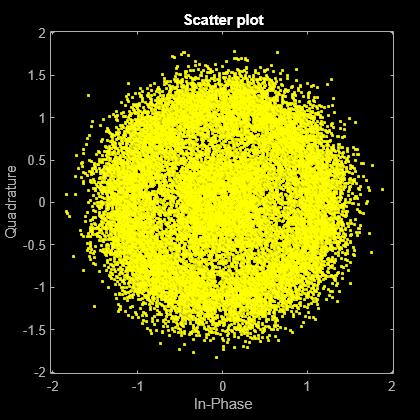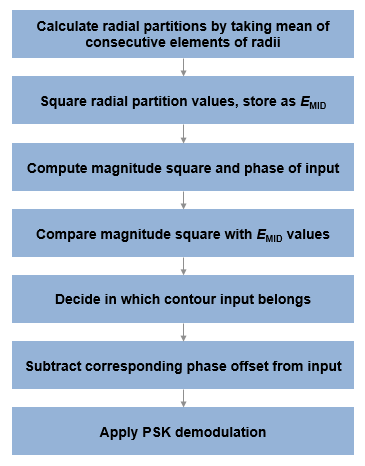dvbsapskdemod
DVB-S2/S2X/SH standard-specific APSK demodulation
Syntax
Description
Z = dvbsapskdemod(Y,M,stdSuffix)Y, that was modulated in accordance with the Digital Video
Broadcasting (DVB-S2/S2X/SH) standard
identified by stdSuffix and the modulation order,
M.
Z = dvbsapskdemod(___,Name=Value)dvbsapskdemod(Y,M,PlotConstellation=true)
demodulates using modulation order M and plots the
constellation. Specify name-value arguments after all other input arguments.
Examples
Input Arguments
Name-Value Arguments
Output Arguments
Algorithms
References
[1] ETSI Standard EN 302 307 V1.4.1: Digital Video Broadcasting (DVB); Second generation framing structure, channel coding and modulation systems for Broadcasting, Interactive Services, News Gathering and other broadband satellite applications (DVB-S2), European Telecommunications Standards Institute, Valbonne, France, 2005-03.
[2] ETSI Standard EN 302 307-2 V1.1.1: Digital Video Broadcasting (DVB); Second generation framing structure, channel coding and modulation systems for Broadcasting, Interactive Services, News Gathering and other broadband satellite applications (DVB-S2X), European Telecommunications Standards Institute, Valbonne, France, 2015-02.
[3] ETSI Standard EN 302 583 V1.1.1: Digital Video Broadcasting (DVB); Framing structure, channel coding and modulation for Satellite Services to Handheld devices (SH), European Telecommunications Standards Institute, Valbonne, France, 2008-03.
[4] Sebesta, J. “Efficient Method for APSK Demodulation.” Selected Topics on Applied Mathematics, Circuits, Systems, and Signals (P. Pardalos, N. Mastorakis, V. Mladenov, and Z. Bojkovic, eds.). Vouliagmeni, Athens, Greece: WSEAS Press, 2009.

